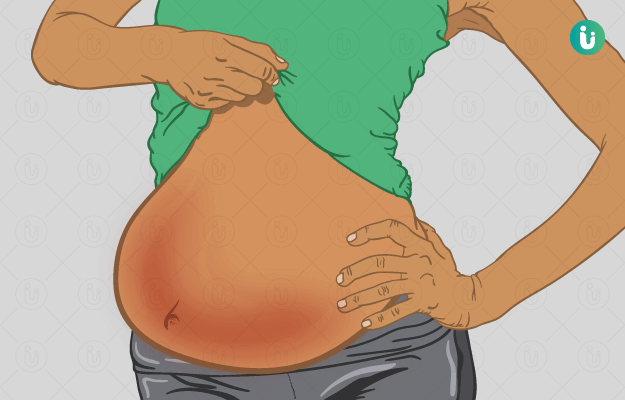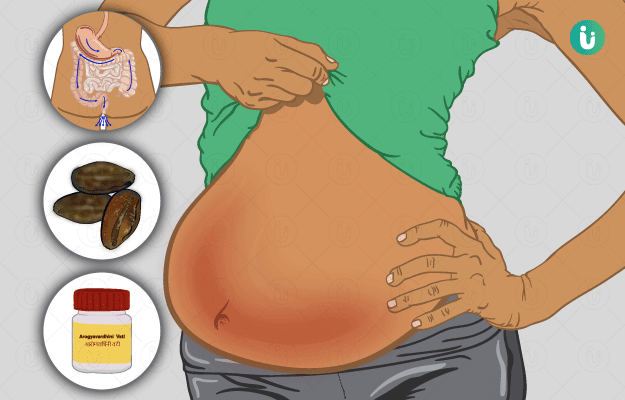What is Ascites?
Ascites refers tofluid accumulation in the space between the lining of the abdomen and the abdominal organs. It is mainly associated with cirrhosis (scarring) of the liver, which can be caused by viral infections of the liver or fatty liver associated with obesity, and diabetes. About 80% of the patients with cirrhosis develop ascites. In India, while the prevalence of liver diseases is not that clear because of inadequate awareness, investigation, and lack of expertise, the prevalence of ascites was found to be 10–30%.
What are the main signs and symptoms of ascites?
Ascitis symptoms may be slow or sudden depending on the cause. Significant symptoms may not be present if the fluid volume is low. However, large fluid volumes can cause shortness of breath.
Others symptoms include
- Abdominal swelling or distension
- Fluid accumulation in the chest
- Increase in weight
- Sense of satiety
- Bloating
- Feeling of heaviness
- Nausea or indigestion
- Vomiting
- Swelling in the lower legs
- Piles
Further complications that can occur if ascites is left untreated are as follows:
- Bacterial peritonitis
- Dilutional hyponatraemia
- Hepatorenal syndrome
- Umbilical hernia
What are its main causes?
Ascites is the outcome of various events. Cirrhosis is most common, which leads to the blockage of blood flow, resulting in an increased pressure in the major blood vessels of liver. Kidneys do not have sufficient capacity to eliminate excess salt through urine leading to fluid accumulation. This causes ascites and results in low levels of albumin (a blood protein). Diseases that damage the liver can lead to ascites.
Examples are:
- Long-term hepatitis B or C infection
- Alcohol abuse
- Certain cancers: appendix, colon, ovaries, uterus, pancreas, and liver
Others include
- Clots in the veins of the liver
- Congestive heart failure
- Pancreatitis
- Thickening and scarring of sac-like covering of the heart
How is it diagnosed and treated?
A physical examination is performed initially to check the amount of swelling in the belly.
- Fluid Sampling
- Fluid may be aspirated to check for the presence of infection or cancer
- Paracentesis is the procedure which is used to remove the fluid for analysis.
Imaging
- MRI, CT, or ultrasound of the abdomen
Tests to Assess Liver and Kidney Functions
- Urine collection for a 24-hour period
- Electrolyte status
- Kidney function tests
- Liver function tests
- Clotting status
The treatment basically includes medicines that increase the removal of excess fluid from the body and antibiotics for infections, if any.
Surgical procedures recommended by the doctor include
- Removal of the excess fluids
- Placement of a special transjugular intrahepatic portosystemic shunt inside the liver to repair blood flow to the liver
Lifestyle modifications include
- Avoid alcohol as it can further damage your liver, thereby aggravating the situation (Read more: How to quit alcohol)
- Lower the amount of salt in the diet (not more than 1,500 mg/day of sodium). Salt substitutes devoid of potassium content can be helpful
- Reduce fluid intake
Ascites is not a disease but a condition caused due to improper lifestyle choices that can cause great damage to the body. If medications and lifestyle modifications are properly followed, this condition can be minimised to a great extent.
(Get online doctor consultation for any health issue)

 Doctors for Ascites
Doctors for Ascites  OTC Medicines for Ascites
OTC Medicines for Ascites
 Ascites articles
Ascites articles

 Ayurvedic Treatment of Ascites
Ayurvedic Treatment of Ascites
 Homeopathic Treatment of Ascites
Homeopathic Treatment of Ascites







 Dr. Rachita Narsaria
Dr. Rachita Narsaria

 Dr. Laxmidutta Shukla
Dr. Laxmidutta Shukla











